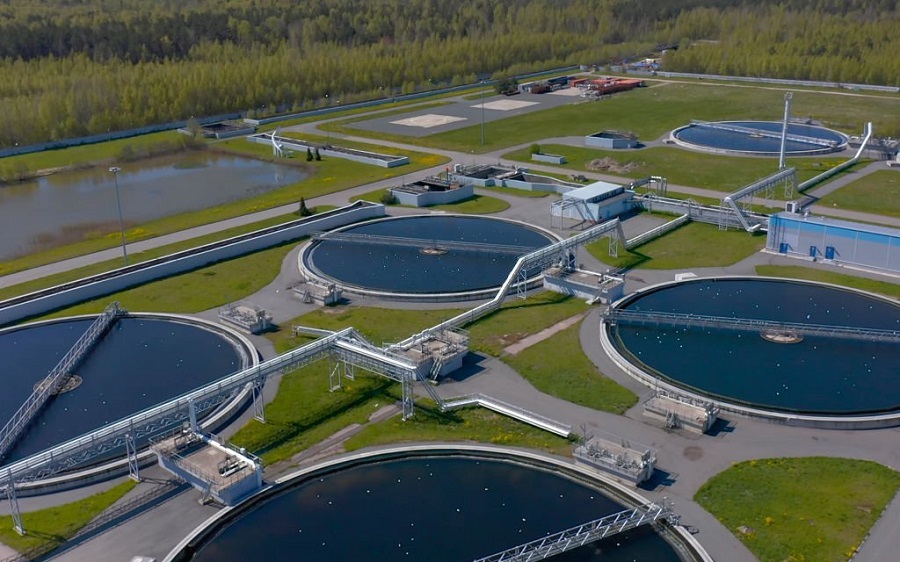Sewage treatment plants are a basic necessity in India. Due to their commendable service pan India, they have gained immense popularity across the country. The gravity of water pollution was understood only when sewage treatment plants were installed in various regions in India. There are different categories of sewage treatment plants that are currently functional in the country.
Each type of sewage treatment plant is engineered to serve a specific purpose. Thanks to technological advancement, we now have multiple methods to address water pollution issues. Sewage water treatment processes not only allow us to reuse water but also help to keep the environment clean and toxic-free.

Let us dive in and try to understand the common types of sewage treatment plants in India.
Sequencing Batch Reactor Sewage Plant
Sewage treatment plants in India have paved their way to success in a short period. The necessity of water conservation and pollution management is nationally recognised and needed. Today, we have a series of ideas and methods to tackle water pollution with great ease.
The Reactor Used for Sludge-sewage Treatment:
The activated sludge treatment technique is used in Sequencing Batch Reactors or SBR, a very active form of wastewater curing procedure. The tanks installed help to transfuse oxygen through sewage and activated sludge. The process reduces the saturation of organic content in the water. The treated wastewater is then made suitable to use on land or as surface water. The time period required for the aeration of water is calculated by the volume of water to be treated and the plant’s capacity.
The procedure involves the use of one or several tanks, depending upon the dirt accumulation. The tanks offer a ‘flow-through’ mechanism which enables wastewater to enter from one end and flow out from another, getting purified in between. There are five core stages in the SBR method that helps to cure water and make it fit to consume.
The SBR process helps in eradicating phosphorus, nitrogen, and other bacteria/microorganisms present in water.
Advantages of SBR Sewage Treatment Plants:
- It offers excellent flexibility in function and maintenance
- Provides impeccable treatment efficiencies
- Various phases can be accomplished in a single reactor vessel – such as initial & secondary classifications, biological treatment, and equalisation
- Produces electric energy from biogas
- A compact tank minimises the necessary space for purifying wastewater
- Is cost-effective (operation cost is low)
Membrane Bioreactor Sewage Plant
Next up, we have the Membrane Bioreactor Sewage Plant MBR. The MBR is a system that functions via membrane processes. The activated sludge procedure (a biological wastewater treatment methodology) is teamed with the microfiltration (MF) or ultrafiltration (UF) process. The MBR sewage treatment technique is mainly used to treat municipal and industrial wastewater.
The MBR system branches into 10-11 subsystems, several membrane zones, and intricate screening headworks. The primary function of the membranes is to sieve organic constituents from water. This process is often executed with the help of clarifiers and filters found in activated sludge functions. The first phase in weakening contaminants is the membrane zone. These contaminants are then separated using a series of membrane screens.
Advantages of Using an MBR System:
- Produces superior-quality effluent
- It does not take up a lot of space
- It is easy to retrofit
- Allows modernisation of old sewage treatment plants in India
- Offers better bio-treatment
- The cost of erasing sludge is lessened
- Sand filtering is not needed
- Easy to use
MBR has become a renowned sewage water treatment method due to its complex yet innovative technology. Other than this, its cost of operation is also relatively low since it only uses membranes. MBR is currently recognised as one of the most successful sewage treatment plants in India.
Sewage Treatment Plants with Movable Biofilm Reactors
The Moving Bed Biofilm Reactor, sewage treatment technology, was founded in the late 1980s. The process requires an aeration tank with plastic transporters filled with wastewater to be used during the MBBR process. This method helps to initiate the formation of biofilm. Both the water and the carriers have the same density. Ideally, activated sludge operations need sludge recycling. However, it is not the same as the MBBR process. It is believed to be a superior technique to other invented, traditional tactics.
Advantages of Using an MBBR System:
- Absolute solid removal
- Smaller sections ask for less space
- Offers enhanced process stability
- Offers enhanced treatment volume
- Regular backwashing is not needed
Activated Sludge Plant (ASP)
The Activated Sludge Plant (ASP) is one of the most widely used sewage treatment plants in India. This process involves aerating the sewage to promote the growth of beneficial microorganisms that decompose organic matter. The ASP process typically includes primary, secondary, and sometimes tertiary treatment stages to ensure comprehensive wastewater purification.
Advantages of Using ASP
- Highly effective in reducing biological oxygen demand (BOD) and chemical oxygen demand (COD) from wastewater. This makes it suitable for regions with stringent effluent standards.
- It can be easily scaled up or down, making it suitable for small communities and large cities. This flexibility allows for the system to be expanded or reduced based on population growth or decline.
- It can treat domestic and industrial wastewater. This makes it a versatile solution for municipalities and industries.
- It provides advanced treatment options, including nutrient removal, which helps in preventing eutrophication in water bodies.
- The treated water can be reused for non-potable purposes like irrigation and industrial processes, thereby promoting water conservation.
Rotating Disc System
The Rotating Disc System is another effective sewage treatment technology used in India. It involves the use of rotating discs to support the growth of microorganisms that break down the organic matter in sewage. The discs are partially submerged in the sewage and rotate slowly, ensuring the microorganisms receive adequate oxygen.
Advantages of Using Rotating Disc System
- Requires minimal maintenance compared to other sewage treatment plants. The mechanical parts are designed for durability, reducing the need for frequent repairs.
- This system consumes less energy, making it cost-effective. The slow rotation of the discs ensures that energy consumption remains low.
- The compact design occupies less space, making it suitable for urban areas where land is at a premium.
- It delivers reliable and consistent treatment results, even under varying load conditions. This reliability makes it a preferred choice for many municipalities.
- The system can handle variations in sewage flow and load effectively, ensuring treatment quality is maintained even during peak loads.
Submerged Aerated Filter (SAF)
The Submerged Aerated Filter (SAF) is a compact and efficient sewage treatment plant solution. It consists of a submerged filter media through which wastewater is passed, allowing microorganisms to thrive and treat the sewage. The filter media provides a large surface area for the growth of biofilms, enhancing the treatment process.
Advantages of Using SAF
- Requires less space, making it ideal for locations with space constraints. This makes it particularly suitable for densely populated urban areas.
- The system operates with lower energy requirements compared to other treatment methods. This reduces operational costs and carbon footprint.
- Provides high levels of BOD and COD removal, ensuring the treated effluent meets regulatory standards.
- It can be used for municipal and industrial wastewater treatment, making it a versatile solution.
- It is quick and easy to install, reducing setup time and costs. This allows for rapid deployment in emergencies.
Suspended Media Filters (SMF)
Suspended Media Filters (SMF) are used for treating sewage by suspending media in the wastewater, which facilitates the growth of microorganisms that degrade the organic matter. The media can be composed of various materials, providing a large surface area for microbial growth.
Advantages of Using SMF
- Delivers efficient removal of contaminants from wastewater, ensuring the treated water is safe for discharge or reuse.
- These systems have low operational and maintenance costs, making them an economical choice for many municipalities.
- It can be easily scaled to meet the demands of different population sizes, from small communities to large urban centres.
- The system can handle fluctuating loads and varying sewage characteristics, ensuring consistent treatment performance.
- Produces high-quality effluent suitable for various non-potable uses, such as agricultural irrigation and industrial processes.
Non-Electric Filter
Non-electric filters are eco-friendly sewage treatment plant systems that do not require electricity to operate. They use natural processes and gravity to treat sewage, making them ideal for remote and off-grid locations.
Advantages of Using Non-Electric Filter
- Operates without electricity, making it environmentally friendly and reducing operational costs.
- The straightforward design makes them easy to install and maintain, requiring minimal technical expertise.
- Utilising natural processes for treatment, these filters contribute to sustainable wastewater management practices.
- Suitable for rural and remote areas where electricity is scarce, providing a reliable wastewater treatment solution.
Trickling Filter
The Trickling Filter is a conventional sewage treatment plant method that involves the flow of wastewater over a bed of media, where microorganisms decompose the organic matter. The media can be composed of various materials such as stones, plastic, or other synthetic materials.
Advantages of Using a Trickling Filter
- Easy to operate with a straightforward design, making them accessible to operators with varying levels of expertise.
- These systems are long-lasting and robust, requiring minimal repairs and offering reliable performance over time.
- They have lower initial and operational costs compared to some advanced treatment systems, making them an economical choice.
- Utilise natural biological processes for wastewater treatment, which is environmentally friendly and reduces chemical usage.
- They can be used for domestic and industrial wastewater treatment, providing a versatile solution for different applications.
Looking for the right sewage treatment solution? Contact us today for expert advice!
FAQs on Sewage Treatment Plants
How does an Activated Sludge Plant (ASP) work?
An Activated Sludge Plant (ASP) treats sewage through a process that involves aeration. Sewage is mixed with air in aeration tanks, promoting the growth of aerobic bacteria that digest organic matter. This results in the formation of a sludge containing microorganisms and waste particles. The sludge is then settled out in secondary clarifiers, and the treated effluent is discharged. Some of the settled sludge is recycled back to maintain the bacterial population, while excess sludge is removed for further processing.
Can treated wastewater from STPs be reused?
Yes, treated wastewater can be reused for various non-potable applications. Common uses include irrigation for agriculture and landscaping, industrial processes like cooling and washing, and even groundwater recharge. Reusing treated wastewater helps conserve freshwater resources, reduces the burden on water supply systems, and promotes sustainable water management practices.
What factors should I consider when investing in a sewage treatment plant?
Investing in a sewage treatment plant demands evaluating factors like wastewater volume, characteristics, regulatory requirements, and available space. Assess lifecycle costs, including installation, operation, maintenance, and disposal. Choose a system adaptable for future needs and prioritise sustainability.
How can I ensure the long-term efficiency of my sewage treatment plant?
To ensure long-term efficiency, establish a proactive operation and maintenance plan. Train staff rigorously, stay updated on technological advancements, and monitor key performance indicators regularly. Engage stakeholders for transparency and support in optimising plant performance and adhering to regulatory standards.
Where to Find Reliable Sewage Treatment Plants in India?
To ensure your surroundings remain clean and healthy, hire our highly skilled Cleantech Water staff today! You may come across several wastewater treatment companies in India, but nothing beats the services and products offered by the engineers at Cleantech Water plants. We do not believe in compromising the quality of sewage water treatment plants to meet the deal price. Our products are tested and go through several trials in the factory before they are approved by our experts. Our installers work hard to offer superior-quality sewage treatment plants to all our clients.
Cleantech Water is by far the leading water solutions company in India, offering only tested sewage treatment plants in India. We assure you all our sewage plants are long-lasting, durable and high-functioning.
Contact us today at info@cleantechwater.co.in or call us at +91-9558996411. We will be happy to help you out!

